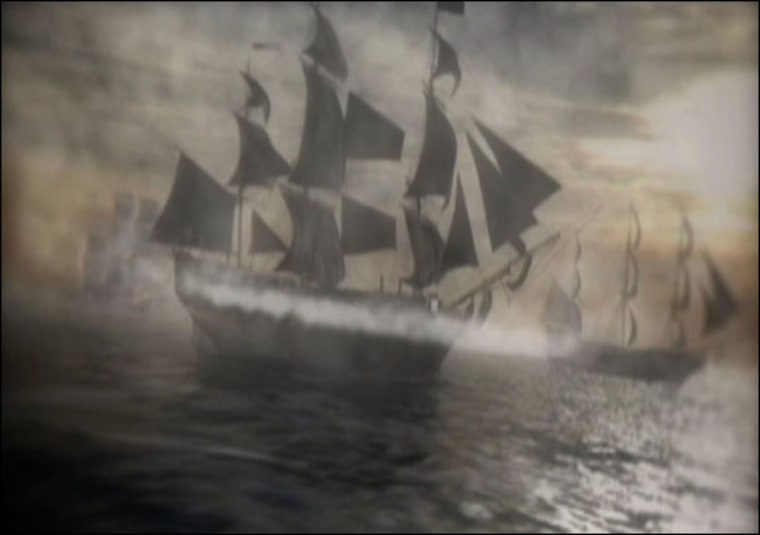It was the stormiest of stormy nights when Admiral John Balchin ordered to fire the guns as a signal of distress. His 110-gun ship, the world's largest and finest vessel, was at the mercy of the winds and waves of the English Channel.
Throughout the night, inhabitants of the nearby Channel Island of Alderney near Cherbourg, France, heard the agonizing sounds of guns. Then, early in the morning, silence fell.
The , had sunk with more than 1,100 seamen and 50 volunteers from the noblest families in England aboard. It was Oct. 5, 1744.
Not a soul survived.
Believed to have crashed onto a group of rocks known as The Casquets, the HMS Victory was immortalized in her final moments by contemporary marine painter Peter Monamy. Lanterns alight and guns desperately firing, she sank, leaving a legacy of tears and a deep mystery around her final resting place.
Remains of the topmast were washed up on the island of Guernsey, but no other part of the ship was found — until two years ago, when the wreck was discovered by a group of deep-sea explorers who released details of the wreck to the media this week.
Until now, it appeared that the HMS Victory, the Admiral and at least 900 aboard had simply vanished without trace.
"The whole nation expressed a deep and generous concern for this terrible misfortune; and his late majesty was graciously pleased to settle a pension ... on the admiral's lady during her life," reported a 1787 book, "The Lives of British Admirals."
The account reported that "to perpetuate the memory of so great a commander, a small but elegant monument was erected in Westminster Abbey, exhibiting the bust of the admiral and ... the unfortunate shipwreck of the Victory."
At almost 75, with nearly 60 years of naval service, Admiral Balchin was recognized as one of the best ship commanders of his day.
Indeed, in July of 1744 he was chosen for his "courage and conduct" to rescue a Mediterranean convoy blockaded by the French Brest fleet in the River Tagus at Lisbon.
For this task, Admiral Balchin was provided with the most powerful fleet.
The HMS Victory was the fifth Royal Navy ship to carry its name. It was also the largest ship in the world at the time of its launch in 1737 at Portsmouth in the U.K.
With a burden of 1,921 tons and a gun deck more than 174 feet long, the HMS Victory was the flagship of the Channel Fleet, properly armed with 110 heavily decorated brass guns bearing George the First's monogram. On the main gun deck, she boasted 28 cannons that fired 42-pound projectiles, the heaviest in use at sea at that time.
After chasing away the French fleet and relieving the convoy, Admiral Balchin set sail for home on Sept. 28, 1744. Two days later, he entered the Bay of Biscay. On Oct. 3, he was overtaken by a violent storm, which dispersed his large fleet. All other ships arrived — shattered but safe — at their destination a week later.
It wasn't so for the HMS Victory. Her tragic fate is recorded in the 1787 account:
"Early in the morning she sunk, and every person on board perished ... One of the most experienced admirals, together with eleven hundred and fifty men, were lost in a moment, and passed together through the gloomy valley that separates time from eternity."
The HMS Victory and the Florida-based company responsible for its discovery, Odyssey Marine Exploration, will be featured in the fourth episode of the Discovery Channel's original series Treasure Quest on Thursday, Feb. 5 at 10 P.M. (ET/PT).
"This has been a mystery for 250 years and with the help of Odyssey, we can close the loop on one of the greatest historically significant finds in maritime history," said John Ford, president and general manager of the Discovery Channel.
